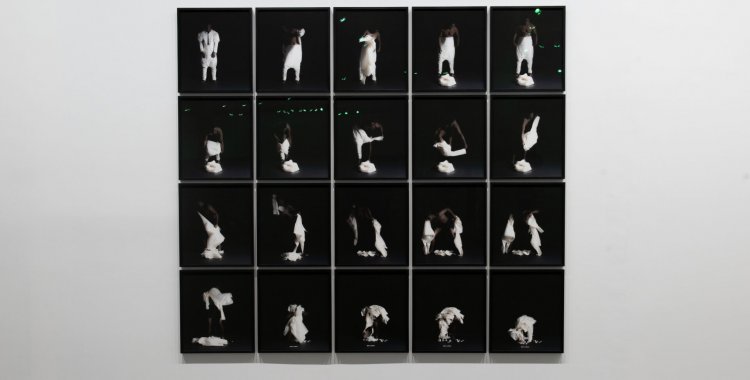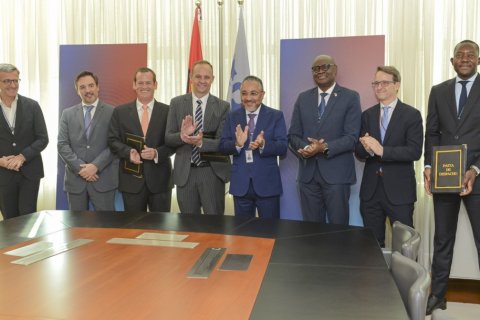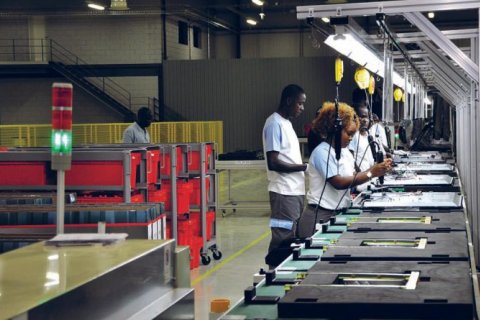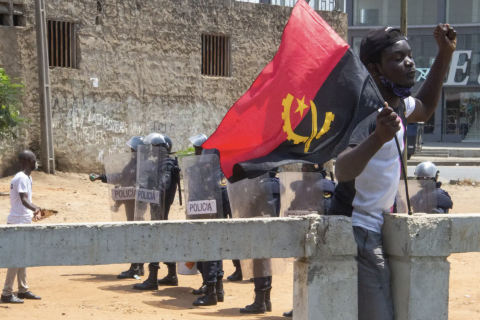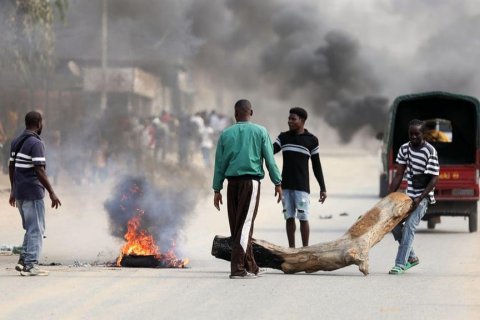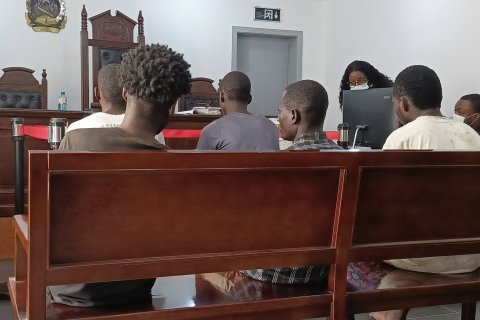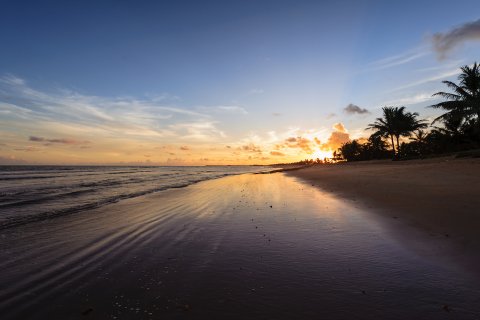In an area of two thousand square metres, the exhibition called "Coreografias do Impossível", presented this Thursday at a press conference in Luanda, will offer visitors works by artists from Angola (Januário Jano), South Africa (Ilze Wolff), Brazil (Aline Motta), France (Sarah Maldoror), Morocco (Bouchra Ouizguen), Vietnam (Trinh Minh-ha), Zimbabwe (Nontsikelelo Mutiti) and Portugal (Carlos Bunga and Raquel Lima).
Januário Jano and Carlos Bunga will present two three-dimensional works, with the Angolan interdisciplinary artist presenting a set of twenty photographs with a historical and memorialistic vision, reflecting on post-colonial identity in Angola, and the Portuguese visual artist exhibiting a 'site-specific' installation, which questions the transience of social and architectural structures, inviting the public to interact with the space in a sensorial way, highlighted the organisation.
A film program and a physical space were created to showcase the work "Habitar el color" – with paint spread across a huge area of the floor on which the public is invited to walk barefoot – and an exhibition called "Baptism", with a set of 20 photographs showing the artist taking off his white clothes.
The vice-president of the São Paulo Biennial Foundation, Maguy Etlin, highlighted the importance of the event being held for the first time in Africa and in a country "with such a strong connection to the history of Brazil".
According to Maguy Etkin, Luanda was chosen because "historically the relationship between these two territories was established in the colonial period in the worst possible way".
"But even in that period there was a network of unofficial relationships that allowed cultural, religious and gastronomic exchanges, which contributed to shaping what we understand today as Brazil", she said.
Maguy Etlin stressed that the traveling exhibition program is a fundamental initiative for the biennial to fulfill its mission of democratizing access to art, emphasizing that each traveling exhibition is accompanied by educators who establish a bridge between the curatorial project and the various local contexts.
"In Luanda, we have established a partnership with the Art and Culture Foundation to create exchanges of experiences and paintings with educators and students from the city," he stressed.
In turn, curators Grada Kilomba and Hélio Menezes highlighted that "Coreografias do Impossível" aims to understand how artists create possibilities within an impossible world, within impossible contexts.
"How do these contexts, which are colonial, violent contexts, of enormous impossibilities, also impact the creation of artistic language, that is, how, what is the thermometer, the temperature of the moment, in the world so that, far from bowing to impossibilities and violence, we face them, react to them, circumvent them", said Hélio Menezes.
Grada Kilomba stressed that it was important to raise questions, "one of the most important exercises", emphasizing that the biennial did not define a theme.
"With the wisdom that a theme is always anchored to the definition and to a constellation of power (...), above all we wanted to give a look and a movement as we walk and walk and resist within the impossibility (...) and how routes of possibility are created", said Grada Kilomba.
Grada Kilomba stated that these multi-existential issues are present in all the works of six women, who will show their work, "generally seen as male artistic work", with cameras, editing and digital, and three men, who will show three-dimensional works.
The São Paulo Biennial, the largest contemporary art exhibition in the southern hemisphere, which has already been to Argentina, Bolivia and now Luanda, also aims to create greater interaction between Angolan artists and cultural workers with other artists who have works exhibited in Angola for the first time.

